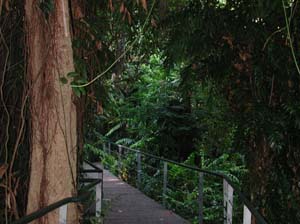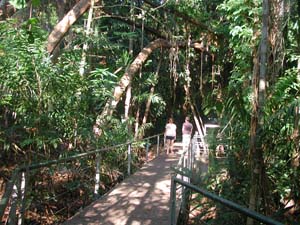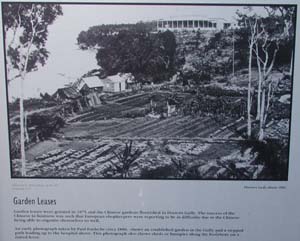

 |
DOCTOR’S GULLY BOARDWALK
Doctor’s Gully was named in honour of Doctor Peel, ship’s surgeon on the SS Moonta in which Surveyor General George Woodroffe Goyder led a surveying party from South Australia (the Territory was then the northern part). They dropped anchor in Darwin Harbour on 5 February 1869 and proceeded to lay out streets for a capital. Doctor Peel was in charge of well diggers. They dug a well with plentiful fresh water at Doctors Gully and a vegetable garden was planted in the rich soil. The well is still there.
In 1873 leases were granted and Chinese vegetable gardens flourished there.
Wildlife who call Doctors Gully home, include Orange-footed scrubfowl, frilled lizards, green tree frogs and of an evening, black flying foxes fly off to feeding grounds.
Malaria outbreaks in the 1870s led to a hospital being built at the top of the Gully. The first building was in corrugated iron and later additions in stone. The hospital was in use until the beginning of World War II.
Doctors Gully was used by small fishing and trading vessels via the now defunct creek.
In 1940 with war imminent, Doctors Gully became a hive of activity as the Royal Australian Airforce flying boat base with 5 Catalina Flying boats. After Darwin was bombed in 1942 two oil tanks and a pump house were built there.
In the 1950s Carl Atkinson, adventurer and salvage expert, took over the Doctor’s Gully lease. He built an iron lung and saved the lives of many divers with the bends. He was a well known character and salvaged jeeps from sunken ships in the harbour. When challenged by customs, he took the jeeps out to sea on a barge and dumped them. Enjoying nature, he threw food scraps to fish and noticed they returned at high tide. In 1964 the area was declared a sanctuary.
|